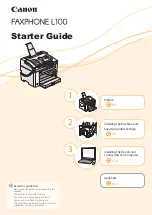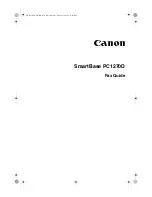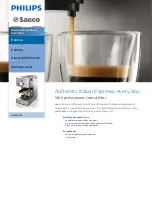
14. General Information
76
■
Copy memory capacity:
Approx. 10 pages (Based on the ITU-T No. 1 Test Chart
in fine resolution.)
*1 Transmission speed depends upon the contents of
the pages, resolution, telephone line conditions and
capability of the other party’s machine.
*2 Transmission speed is based upon the ITU-T No. 1
Test Chart. If the capability of the other party’s
machine is inferior to your unit, the transmission time
may be longer.
*3 If an error occurs during fax reception, such as a
paper jam or if the recording paper runs out, the fax
and subsequent faxes will be retained in memory.
*4 Recording time may be reduced by the calling party’s
background noise.
ITU-T No. 1 Test Chart
Note:
L
Design and specifications are subject to change
without notice.
L
The pictures and illustrations in these instructions
may vary slightly from the actual product.
Recording paper specifications
Recording paper size:
A4: 210 mm
u
297 mm
Recording paper weight:
64 g/m
2
to 80 g/m
2
Note for recording paper:
L
Do not use the following types of paper:
–
Paper with a cotton and/or fibre content that is
over 20 %, such as letterhead paper or paper
used for resumes
–
Extremely smooth or shiny paper, or paper that is
highly textured
–
Coated, damaged or wrinkled paper
–
Paper with foreign objects attached, such as tabs
or staples
–
Paper which has dust, lint or oil stains
–
Paper that will melt, vaporize, discolour, scorch or
emit dangerous fumes near 200
q
C, such as
vellum paper. These materials may transfer onto
the fusing roller and cause damage.
–
Moist paper
L
Some paper only accepts print on one side. Try using
the other side of the paper if you are not happy with
the print quality or if misfeeding occurs.
L
For proper paper feeding and best print quality, we
recommend using long-grained paper.
L
Do not use paper of different types or thickness at the
same time. This may cause a paper jam.
L
Avoid double-sided printing.
L
Do not use paper printed from this unit for double-
sided printing with other copiers or printers. This may
cause a paper jam.
L
To avoid curling, do not open paper packs until you
are ready to use the paper. Store unused paper in
the original packaging, in a cool and dry location.
14.2.2 Cordless handset
■
Standard:
GAP (Generic Access Profile)
■
Number of channels:
120 Duplex Channels
■
Frequency range:
1.88 GHz to 1.9 GHz
■
Duplex procedure:
TDMA (Time Division Multiple Access)
■
Channel spacing:
1,728 kHz
■
Bit rate:
1,152 kbit/s
■
Modulation:
GFSK (Gaussian Frequency Shift Keying)
■
RF transmission power:
Approx. 250 mW
■
Voice coding:
ADPCM 32 kbit/s
■
Operating environment:
5
q
C – 40
q
C, 20 % – 80 % RH (Relative Humidity)
■
Dimensions:
Approx. height 155 mm
u
width 48 mm
u
depth 34 mm
■
Mass (Weight):
Approx. 140 g
Содержание KX-FC225NZ
Страница 79: ...79 Notes ...





































